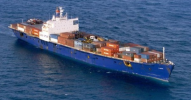So we’re talking DESRON MUTO here?Gamera
-
Please take a moment and update your account profile. If you have an updated account profile with basic information on why you are on Air Warriors it will help other people respond to your posts. How do you update your profile you ask?
Go here:
Edit Account Details and Profile
You are using an out of date browser. It may not display this or other websites correctly.
You should upgrade or use an alternative browser.
You should upgrade or use an alternative browser.
Ship Photo of the Day
- Thread starter Randy Daytona
- Start date
Or maybe a Shatterdome? ?So we’re talking DESRON MUTO here?
Shatnerdome
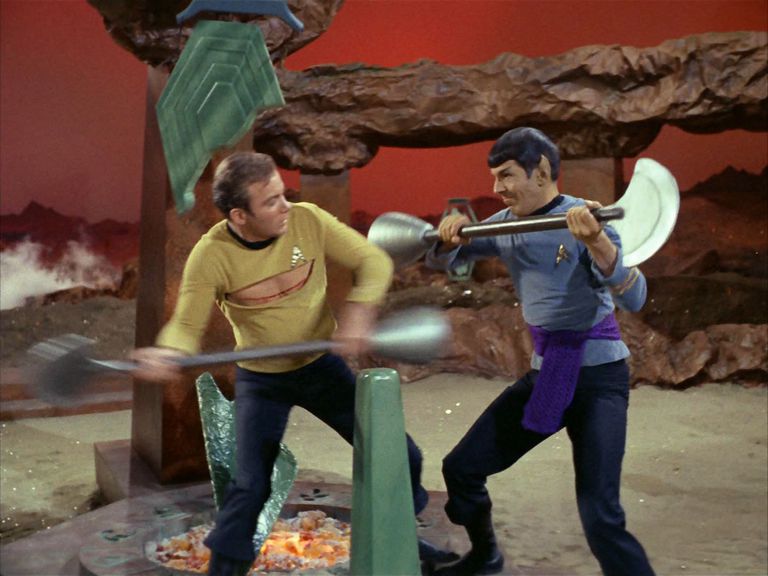

OK spoil sport...back to business. The question up for debate: “What was the most important U..S. N. ship type of WWII?” You can measure in effectiveness, fire-power, purpose, or so on. My contender, the lowly Landing Ship Tank...LST.
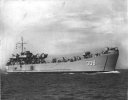
The war was genuinely world wide and 70% of that world is covered in ocean. Nevertheless, the only path to victory was across land, even puny islands in the Pacific, so in my opinion the introduction of a ship that could impact both elements was the game changer. I struggled with this, submarines were high on my list as were DEs, but in the end it had to be the LST.
Any other ideas?

The war was genuinely world wide and 70% of that world is covered in ocean. Nevertheless, the only path to victory was across land, even puny islands in the Pacific, so in my opinion the introduction of a ship that could impact both elements was the game changer. I struggled with this, submarines were high on my list as were DEs, but in the end it had to be the LST.
Any other ideas?
hlg6016
A/C Wings Here
Agree LST's and Combat Cargo Ships. None of the flat tops or big guns would have been possible without the Fleet Train.OK spoil sport...back to business. The question up for debate: “What was the most important U..S. N. ship type of WWII?” You can measure in effectiveness, fire-power, purpose, or so on. My contender, the lowly Landing Ship Tank...LST.
View attachment 30145
The war was genuinely world wide and 70% of that world is covered in ocean. Nevertheless, the only path to victory was across land, even puny islands in the Pacific, so in my opinion the introduction of a ship that could impact both elements was the game changer. I struggled with this, submarines were high on my list as were DEs, but in the end it had to be the LST.
Any other ideas?
OK spoil sport...back to business. The question up for debate: “What was the most important U..S. N. ship type of WWII?” You can measure in effectiveness, fire-power, purpose, or so on. My contender, the lowly Landing Ship Tank...LST.
View attachment 30145
The war was genuinely world wide and 70% of that world is covered in ocean. Nevertheless, the only path to victory was across land, even puny islands in the Pacific, so in my opinion the introduction of a ship that could impact both elements was the game changer. I struggled with this, submarines were high on my list as were DEs, but in the end it had to be the LST.
Any other ideas?
Excellent choice - saw a remark that on at least one occasion the keel laying for a carrier was delayed so several LST’s could get priority and completed first. I get the impression the Commandant would prefer to have a quite a few of a modern version of the WW2 era LST’s (length 328 ft, beam 50 ft, Max gross tonnage 4,000 tons and capable of putting 2,000 tons of cargo directly on the beach) rather than more much larger amphibious ships.
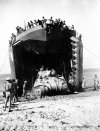
A Canadian LST off-loads an M4 Sherman during the Allied invasion of Sicily in 1943
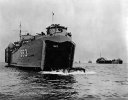
USS LST-983 (USS Middlesex County) with LST-601 (USS Clarke County) in the background, launches a Marine LVTP-5for a waterborne landing, in the 1960s. When carrying amphibious tractors, an LST could land her payload from offshore without beaching.
Perhaps just as important were fleet oilers, in particular the “Fast” oilers of the Cimarron class. This class of 35 twin screw tankers had a 50% increase in speed (up to 18 knots) Length 553 ft, beam 75 ft, displacing nearly 25,000 tons and carried roughly 146,000 barrels of oil. Interesting that as a deep draft ship, it was often a stepping stone to command of an aircraft carrier. Superb article in wikipedia: https://en.m.wikipedia.org/wiki/Cimarron-class_oiler_(1939).
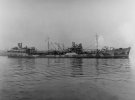
USS Cimarron (AO-22), lead ship of the class in February 1942
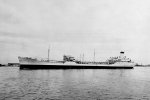
USS Neosho (AO-23) sunk at Coral Sea after 7 bomb hits and a crashed Japanese bomber - one of its crewman earned the Medal of Honor, Oscar V. Peterson.
Can you guys stop fucking with the best and purest thread AW has to offer? Randy Daytona is god damn saint with his ship posts.
We have been fortunate in this thread to have a lot of people who study and enjoy history.
Last edited:
I hate these type of buzzfeed questions because they ignore the warfighting reality that all the things are needed to succeed. The USN succeeded in WWII because it could and did build all the things. Other Navies failed because they were too myopic in their focus both pre-war and during the war. I'm sure in 1942-1944 some IJN staffers were wishing they had more transports, more merchies, and more ASW instead of three Yamatos.
I was thinking less buzzfeed, more cocktail party kind of question, but you are right. It is the wholeness of the force that made it effective.I hate these type of buzzfeed questions because they ignore the warfighting reality that all the things are needed to succeed. The USN succeeded in WWII because it could and did build all the things. Other Navies failed because they were too myopic in their focus both pre-war and during the war. I'm sure in 1942-1944 some IJN staffers were wishing they had more transports, more merchies, and more ASW instead of three Yamatos.
Just add Gato/Balao class fleet subs, and I agree.Tip of the spear, Essex class. Logistics, Liberty ships.
SS El Faro, the cargo ship that went down during Cat 3 hurricane Joaquin back in 2015. Just finished (as much as I could of Raging Sea by Rachel Blade - good book at times, way off track at others) It was an older roll on / roll off ship (which have watertight integrity issues) that was reaching the end of its life before the captain miscalculated with old data and drove the ship into a rapidly intensifying Cat 3 hurricane. The single engine, single screw ship took on water, developed a list and when the list reached a certain point, the oil could no longer reach the engine which automatically shutdown as the ship drifted into the eyewall of the hurricane. Also of note, this class of ships was grandfathered by the Coast Guard with open lifeboats, not the sealed, orange capsules mandated on newer ships. Trying to board an open lifeboat in a Cat 3 hurricane....
Of note, the ship was built in 1975 at the Sun Shipbuilding & Drydock Company, Chester, Pennsylvania. By the end of WW2, this was the biggest shipyard in the United States employing 40,000 workers and building 40% of the tankers used in WW2. The shipyard also built the Glomar Explorer of fame in 1971. Today, globalization has taken its told and the shipyard exists no more - it is the site of Harrah's Casino and a horsetrack.
Length 791 ft, beam 94 ft, 31,000 tons. The single engine was capable of propelling the ship at 22 knots. Sunk with all hands (33) in the middle of Hurricane Joaquin, 01 October 2015.
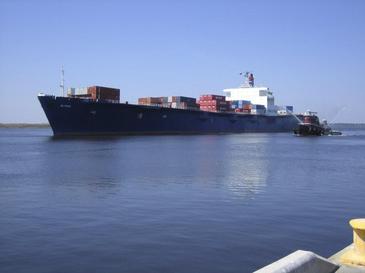
 en.wikipedia.org
en.wikipedia.org
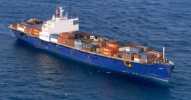
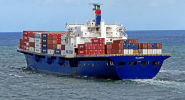
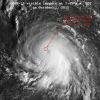
NTSB video - at the 6:52 mark, you can see where the water was able to enter through holes designed into the ship
Of note, the ship was built in 1975 at the Sun Shipbuilding & Drydock Company, Chester, Pennsylvania. By the end of WW2, this was the biggest shipyard in the United States employing 40,000 workers and building 40% of the tankers used in WW2. The shipyard also built the Glomar Explorer of fame in 1971. Today, globalization has taken its told and the shipyard exists no more - it is the site of Harrah's Casino and a horsetrack.
Length 791 ft, beam 94 ft, 31,000 tons. The single engine was capable of propelling the ship at 22 knots. Sunk with all hands (33) in the middle of Hurricane Joaquin, 01 October 2015.

SS El Faro - Wikipedia



NTSB video - at the 6:52 mark, you can see where the water was able to enter through holes designed into the ship
Attachments
Last edited:
USS Pennsylvania (BB-38) was the lead ship of the 2 ship Standard class of super-dreadnoughts - her sister ship was the USS Arizona (BB-39). Interestingly, Pennsylvania was featured in 2 of the more famous naval photographs of WW2: the first being damaged in drydock at Pearl Harbor and the second leading the fleet at Lingayen Gulf. The Pennsylvania was also one of the first American warships damaged during the war and was also the last to suffer major damage, taking a serious torpedo strike on 12 August 1945 while at anchor. The torpedo tore a hole 30 ft in diameter in the aft portion of the hull - the bottom photo shows just how serious the damage was.
Length: 608 ft, Beam: 97 ft, Displacement 39,200 tons
12 Babcock and Wilcox boilers producing 34,000 HP feeding 4 Westinghouse turbines turned 4 shafts for 21 knots.
Main armament: 12 (4x3) 14"/45 caliber rifles hurling 1,500 lb shells out to 34,000 yards, secondaries (after 1942) 16 (8x2) 5"/38 caliber dual purpose, 40 (10x4) 40mm Bofors, 51 (51x1) 20mm Oerkilons
Armor: Main belt: 13.5", Turrets: 18", Deck: 3"
Commissioned 12 Jun 1916, Decommissioned: 29 Feb 1946, scuttled after the Operation Crossroads nuclear tests on 20 Feb 1948
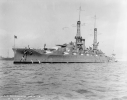
Pennsylvania in her original configuration, December 1916
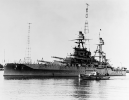
Pennsylvania in Pearl Harbor in 1932, with tripod masts and her enlarged bridge
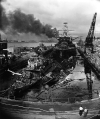
Cassin, Downes and Pennsylvania in the aftermath of the attack on Pearl Harbor
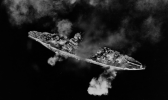
Pennsylvania shelling Guam on 21 July
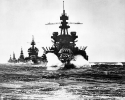
Pennsylvania leading Colorado, Louisville, Portland and Columbia into Lingayen Gulf, Philippines, January 1945
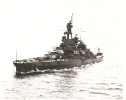
Photo probably taken on 1 August 1943 near Puget Sound after a refit.
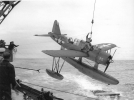
A VO-2 OS2U-3 is lifted off the recovery sled and about to be swung aboard Pennsylvania (BB-38) on 3 August 1943.
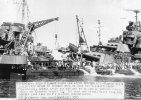
BATTLESHIP RIDES LOW AFTER TORPEDO HIT
Pumped water spills from hoses as crewmen work to keep the Pennsylvania (BB-38) afloat after she was hit by an aerial torpedo during action off Okinawa 12 August 1945. The ship was saved. Hoses from gun barrels lead from ship's flooded compartments.
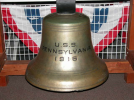
The Bell of the Pennsylvania (BB-38) on display at Erie Maritime Museum in Erie, PA.
Length: 608 ft, Beam: 97 ft, Displacement 39,200 tons
12 Babcock and Wilcox boilers producing 34,000 HP feeding 4 Westinghouse turbines turned 4 shafts for 21 knots.
Main armament: 12 (4x3) 14"/45 caliber rifles hurling 1,500 lb shells out to 34,000 yards, secondaries (after 1942) 16 (8x2) 5"/38 caliber dual purpose, 40 (10x4) 40mm Bofors, 51 (51x1) 20mm Oerkilons
Armor: Main belt: 13.5", Turrets: 18", Deck: 3"
Commissioned 12 Jun 1916, Decommissioned: 29 Feb 1946, scuttled after the Operation Crossroads nuclear tests on 20 Feb 1948

Pennsylvania in her original configuration, December 1916

Pennsylvania in Pearl Harbor in 1932, with tripod masts and her enlarged bridge

Cassin, Downes and Pennsylvania in the aftermath of the attack on Pearl Harbor

Pennsylvania shelling Guam on 21 July

Pennsylvania leading Colorado, Louisville, Portland and Columbia into Lingayen Gulf, Philippines, January 1945

Photo probably taken on 1 August 1943 near Puget Sound after a refit.

A VO-2 OS2U-3 is lifted off the recovery sled and about to be swung aboard Pennsylvania (BB-38) on 3 August 1943.

BATTLESHIP RIDES LOW AFTER TORPEDO HIT
Pumped water spills from hoses as crewmen work to keep the Pennsylvania (BB-38) afloat after she was hit by an aerial torpedo during action off Okinawa 12 August 1945. The ship was saved. Hoses from gun barrels lead from ship's flooded compartments.

The Bell of the Pennsylvania (BB-38) on display at Erie Maritime Museum in Erie, PA.
Last edited:
Seen in the Navy Times.

 www.navytimes.com
www.navytimes.com
I was with the National Park Service when the USS Cassin Young started taking on water. The Navy's casual advice was to scrap it but the park was smart enough to put it in Dry Dock #1 (typically reserved for the USS Constitution) and then say "We can't take her out until she is repaired." Since the Constitution was due an overhaul cash was added to the budget to fix up old DD-793.
It is always sad to see these old ships struggle.

Repairs underway to save the decommissioned destroyer The Sullivans from taking on water
The 78-year-old decommissioned vessel is named in honor of the five Sullivan brothers who were killed in action when the USS Juneau was sunk by the Japanese in the South Pacific during World War II.
I was with the National Park Service when the USS Cassin Young started taking on water. The Navy's casual advice was to scrap it but the park was smart enough to put it in Dry Dock #1 (typically reserved for the USS Constitution) and then say "We can't take her out until she is repaired." Since the Constitution was due an overhaul cash was added to the budget to fix up old DD-793.
It is always sad to see these old ships struggle.

